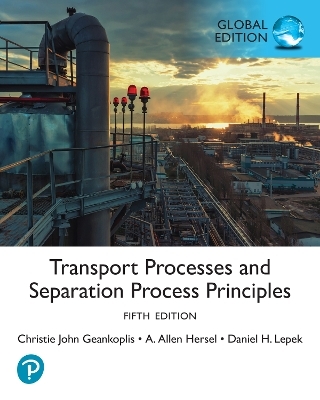
Patent Fundamentals for Scientists and Engineers
CRC Press (Verlag)
978-1-138-58221-7 (ISBN)
- Keine Verlagsinformationen verfügbar
- Artikel merken
In addition to a new chapter dedicated to the America Invents Act, the third edition includes annotations of the recent law changes, updates in all chapters, new figures, and new case studies. The authors discuss patent filing outside of the United States and also dedicate a chapter specifically to the Canadian patent system. They describe the key topics that anyone involved in the patent process needs to know, including what makes an invention patentable, the art of patent searching, and the crucial role of record keeping. The text also includes an indispensable glossary of patent terminology, as well as an appendix with sample U.S. Patent and Trademark Office (USPTO) forms.
This book provides a valuable guide to assist inventors in dealing with the USPTO, as well as with patent professionals. The text describes the patent process from conception to application filing and is a must-have reference for scientists and businesspeople alike. Since the role of patent professionals is to obtain the maximum protection for inventors, both the inventor and businessperson would be well advised to understand and participate in all the steps involved. This book offers an excellent insight into the patent process.
Thomas T. Gordon [deceased] worked as a chemist in the pharmaceutical and polymer industries before earning a JD from St. Louis University. Mr. Gordon had over 40 years’ experience in the patent field, working in various areas of patent preparation, searching, and prosecution. He conducted patent licensing programs in the United States and Europe and worked for major industrial corporations. He finished his career in private patent practice in the Arlington, Virginia area. Arthur S. Cookfair is a patent agent with more than 45 years’ experience in patent law in both corporate and private practice. He has served as a patent examiner in the U.S. Patent and Trademark Office and is the author of numerous publications on patents and inventions. Based on his undergraduate work in chemistry and geoscience and graduate work in science and education, Dr. Cookfair has had a varied career as a chemist, educator, and patent practitioner. He has lectured and taught extensively on science and patent law in this country and abroad and has been the recipient of a Fulbright grant. Vincent G. LoTempio is a registered patent attorney with the firm of Kloss, Stenger & LoTempio in Buffalo, New York. His practice focuses on intellectual property matters including patent, trademark, copyright prosecution, and infringement litigation. Mr. LoTempio is a consultant on patent issues to corporate and independent inventors. He has authored articles on patents in the Buffalo Law Journal and Buffalo Business First and he writes weekly articles on intellectual property in his personal LoTempio Law Blog. Also he lectures to businesses and inventors groups on how to identify and protect valuable intellectual property such as patentable subject matter. Brendan S. Lillis is a registered patent attorney. He previously worked as a private software consultant in the health care industry. Mr. Lillis has developed and cofounded (with Vincent G. LoTempio) PatentHome.com, which serves as an educational resource for inventors to learn about intellectual property law through articles, audio recordings, and videos. Mr. Lillis is an avid speaker, conducting lectures on patent law to schools, corporations, and inventor’s organizations. He is currently a private practitioner in the Buffalo, New York, area, where he practices corporate and intellectual property law, specializing in software-related patent applications.
Patents as intellectual property
Trademarks
Copyrights
Trade secrets
Patents
Case study: Patents show birth of the electronic age
What a patent is
What a patent is not
USPTO administrative structure
USPTO administrative function
U.S. courts’ role
Filing of U.S. patents
The Canadian patent system
Canadian law distinctions
Case study: Higher life-forms
General facts about the Canadian Intellectual Property Office (CIPO)
Case study: Patenting of a living organism
Criteria for a patent
Novelty requirement
Utility requirement
Non-obviousness requirement
Case study: Obviousness
Case study: Serendipitous inventions
Types of patents
Stage 1: From conception to patent application
Case study: Publication—§102 (b) one year bar
Stage 2: The patent application
Stage 3: The prosecution
Trade secret approach
Defensive publication approach
Provisional application
An important factor: Cost
Case study: The Einstein-Szilard refrigerator (patent benchmark)
Example 1
Example 2
Patent searching in the 21st century
Searching a computer database
Searching tools
Enforcement of patent rights
Importance of record keeping
Patents around the world
Subject matter that can be patented in other countries
Time for filing patent applications in other countries
Procedures for filing patent applications in other countries
Additional PCT options
Additional EPC options
Examples of typical scenarios for extensive foreign filing
Harmonization of patent laws
America invents act
Immediate provisions of the Leahy-Smith America Invents Act
Provisions effective 10 days after enactment
Provisions effective 1 year after enactment
Provisions effective 18 months after enactment
USPTO practice changes
Glossary: Words and phrases used in patent terminology
Appendix
Index
| Erscheint lt. Verlag | 31.12.2023 |
|---|---|
| Zusatzinfo | 7 Tables, black and white; 75 Illustrations, black and white |
| Verlagsort | London |
| Sprache | englisch |
| Maße | 152 x 229 mm |
| Themenwelt | Technik ► Umwelttechnik / Biotechnologie |
| ISBN-10 | 1-138-58221-2 / 1138582212 |
| ISBN-13 | 978-1-138-58221-7 / 9781138582217 |
| Zustand | Neuware |
| Informationen gemäß Produktsicherheitsverordnung (GPSR) | |
| Haben Sie eine Frage zum Produkt? |
aus dem Bereich


